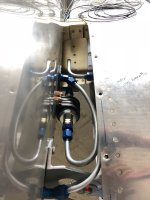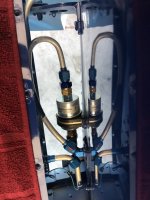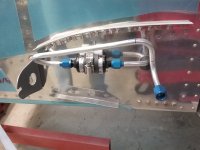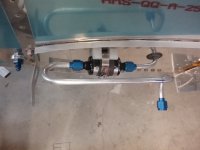This from a post that discusses depth filtration and better explained than I could:
"Dan, your line
could use a little context. I work with water filtration, so while the contaminants and viscosity differ, the filtration aspects are quite similar. In general, I'd encourage interested people to dig a little into depth versus surface filtration.
Depth filtration tends to achieve progressively higher removal efficiency as it develops a surface cake of contaminants. The trapped materials make it yet more difficult for the fluid to reach the "clean" side of the media. The cost for this improved performance is higher pressure drop. Depth filters don't typically have a defined minimum particle size that'll pass, as your testing demonstrates. Whether any given particle will be trapped depends on myriad factors beyond simply particle size, such as particle shape, differential pressure, filter uniformity, etc. For this reason, they're customarily given nominal filtration ratings, though these may or may not have a particular test methodology associated with the claim.
Surface filtration, like woven screens, tends towards absolute filtration. The openings are highly uniform. Still, large particles may pass if they're not spherical. Threads, like metal fragments for examples, could be millimeters long and pass through a fine mesh if they happen to hit just right (or wrong, as it were). Surface filters also improve in removal efficiency with the development of a surface cake, but unlike depth filters they tend to have a much lower solids storage capacity. A particle either stops at the surface, or it doesn't. Once a given hole through the mesh gets blocked, pressure rises as the remaining open area decreases. Same basic trend as a depth filter, but can be dramatically more pronounced.
It's easy to visualize the contrast. Imagine shaking dirt through a metal screen versus shaking that same dirt through a suspended piece of shag carpet. Both will allow very small particles to pass, but the shag will hold a lot more dirt before it's completely blocked as compared to a screen. This assumes that the screen and the shag have the same basic opening sizes in the weave.
What's not visible in your removal table is that the particles larger than 40 microns rapidly clog the screen filters, leading to a rapid pressure rise. Sure, it's only about 15-18% of the dust by volume, but once the dust particles are bigger than the mesh, they're not going through and plugging occurs incredibly fast. These same particles have a lot more media volume available in the disposable filters, hence the longer run times.
LikeReply
Report"









